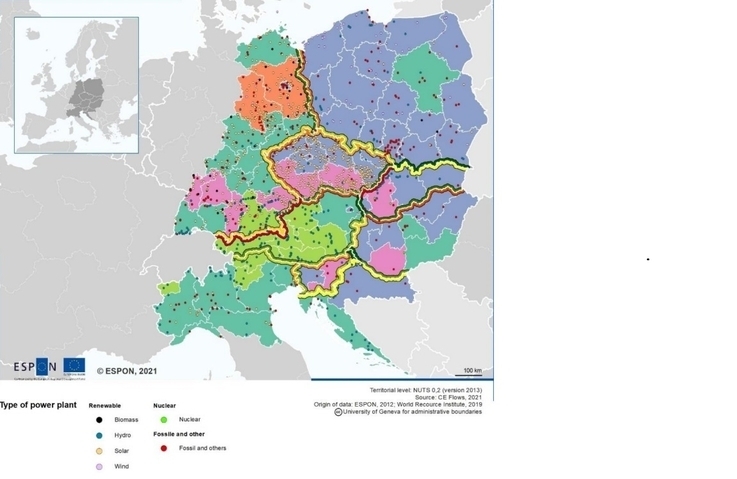The Czech Republic, which will take over the EU presidency in July, is one of the leading advocates of the increasing role of nuclear power in the European energy mix. Moreover, for the first time, nuclear power as an alternative to Russian raw materials was mentioned by the European Commission. Meanwhile, Poland, as ESPON programme experts remind, is one of the few countries in Central Europe which do not use this energy source.
ESPON is a research programme co-financed by the European Commission, which focuses on describing similarities and differences between EU regions and associated countries. One of its analyses was devoted to the preparation of individual Central European countries for the EU to accomplishing the zero-carbon target by 2050.
“Some regions, such as southern Germany or Austria, are already highly specialised in using renewable energy sources, while others, primarily in the east, rely mainly on fossil fuels. Even in countries that are economically close to the >>old 15<<, such as Slovenia and the Czech Republic, the total energy from RES remains at a low level, failing to meet the needs of both consumers and industry”, according to the w ESPON study.
Possibly, the poorer, eastern Central European countries will be able to achieve climate neutrality through investments in nuclear energy. Its biggest advocate in the EU, next to France, is the Czech Republic, which will assume the EU presidency in July 2022.
Our southern neighbours already have six nuclear reactors that generate more than one-third of the electricity consumed. In addition, the Czech Republic’s greenhouse gas emissions decreased by 43 percent between 1990 and 2020, thus meeting both the national and EU targets.
“Decarbonisation of the Polish economy still poses a huge challenge. The country does not have many rivers on which hydropower plants could be built. While the Baltic Sea fosters the development of offshore wind energy in the northern regions of the country, it is, in fact, in the south where the most energy-intensive areas are located. In addition, Poland does not have a nuclear power plant, unlike other EU countries from the former Eastern Bloc”, ESPON experts conclude.
In Central Europe, investments in “green” energy infrastructure will increase by 40 percent in 2022 alone, to reach approx. EUR 950 million. However, as many as six out of nine countries in that region of the EU were for years “behind the Iron Curtain” and underwent a challenging economic transformation, during which technologies were developed to provide cheap, but environmentally harmful, energy. Now they still need to catch up with Western European countries.
Especially the eastern regions of Central Europe are characterised by “low power and poor RES infrastructure”. Therefore, these countries must use “other environmentally-friendly but, at the same time, efficient energy sources”. “Otherwise these regions will not avoid severe social and economic costs”, ESPON experts warn.
Poland is facing a particular energy transformation challenge. It is among the first five EU Member States in terms of population and is the largest of all Central European countries analysed by ESPON. Its expenditure on the necessary energy transformation alone is estimated at around 100 billion PLN.
The use of nuclear power, along with gradually expanding the RES infrastructure, could help to implement the full-scale energy transformation process as smoothly as possible.
In the REPowerEU programme announced by the European Commission, which is intended to help the European Union move away from Russian fossil fuels and contribute to a fair transition, nuclear power is considered one of the basic tools for rapidly attaining independence from raw material imports from the East. This reflects a significant change in the EU’s standpoint, giving hope that the use of zero-carbon nuclear energy will allow the poorer countries in the Community to timely meet their climate targets.
The current ESPON analysis covered the area of the EU’s Interreg Central Europe programme. It is composed of nine countries: Austria, Croatia, Hungary, Poland, Slovakia, Slovenia, and selected regions of Germany and Italy, in total accounting for 23% of the Community’s territory.
Source of information: PAP MediaRoom






